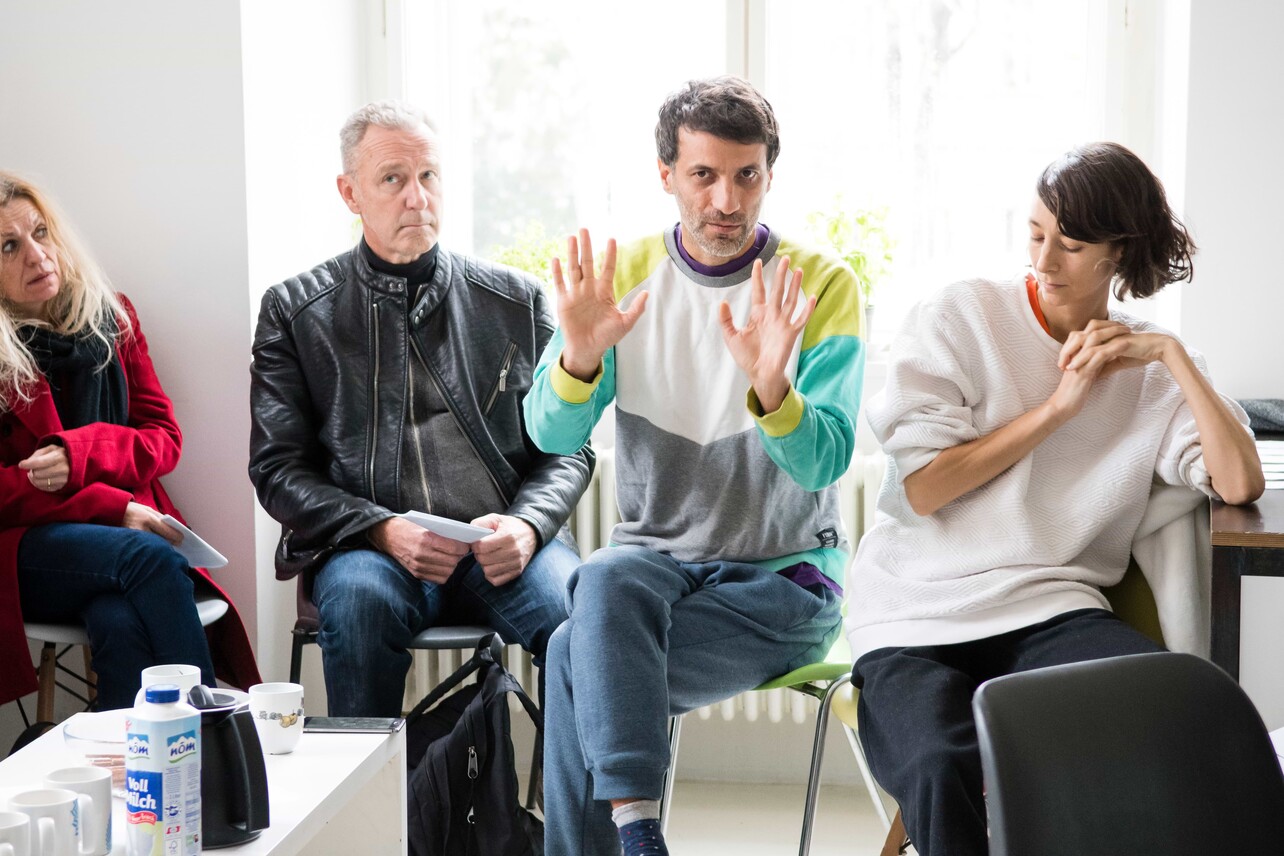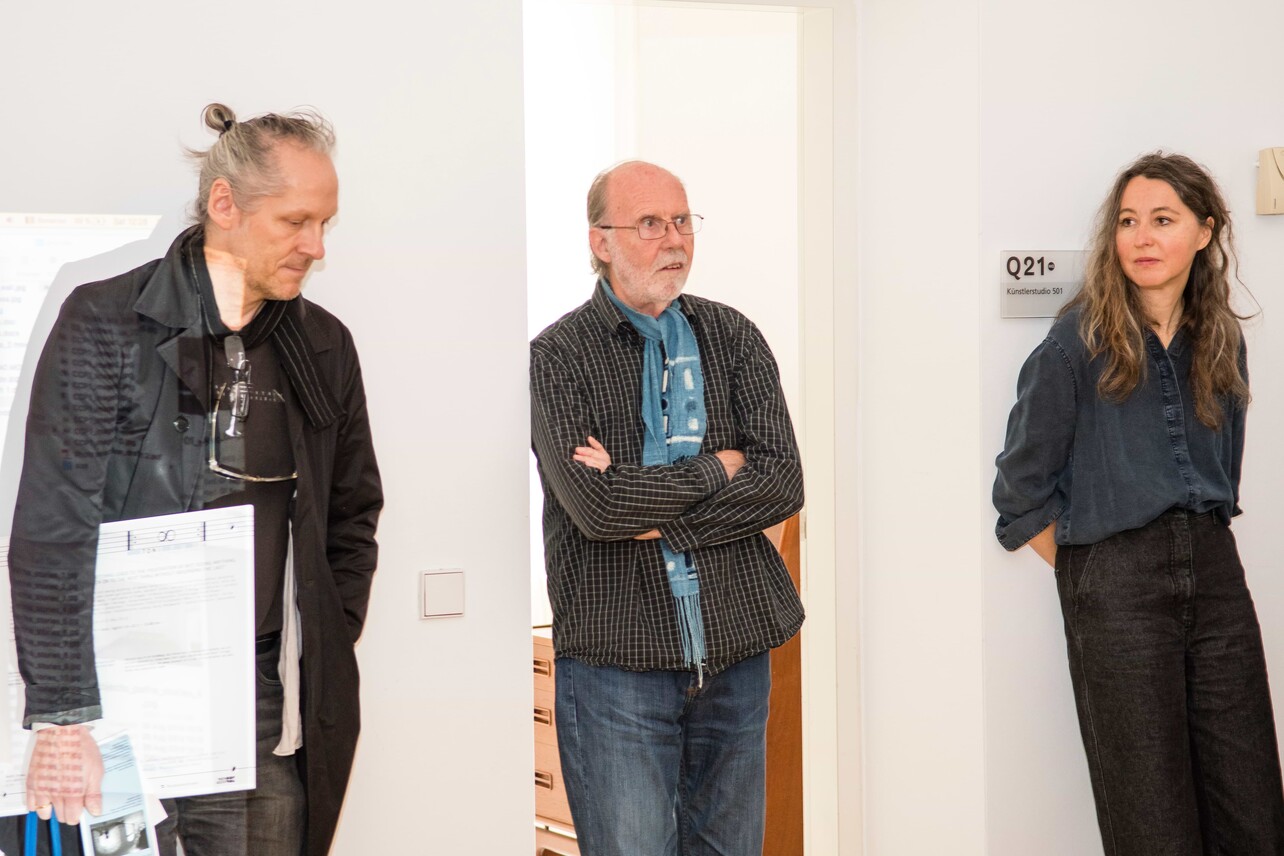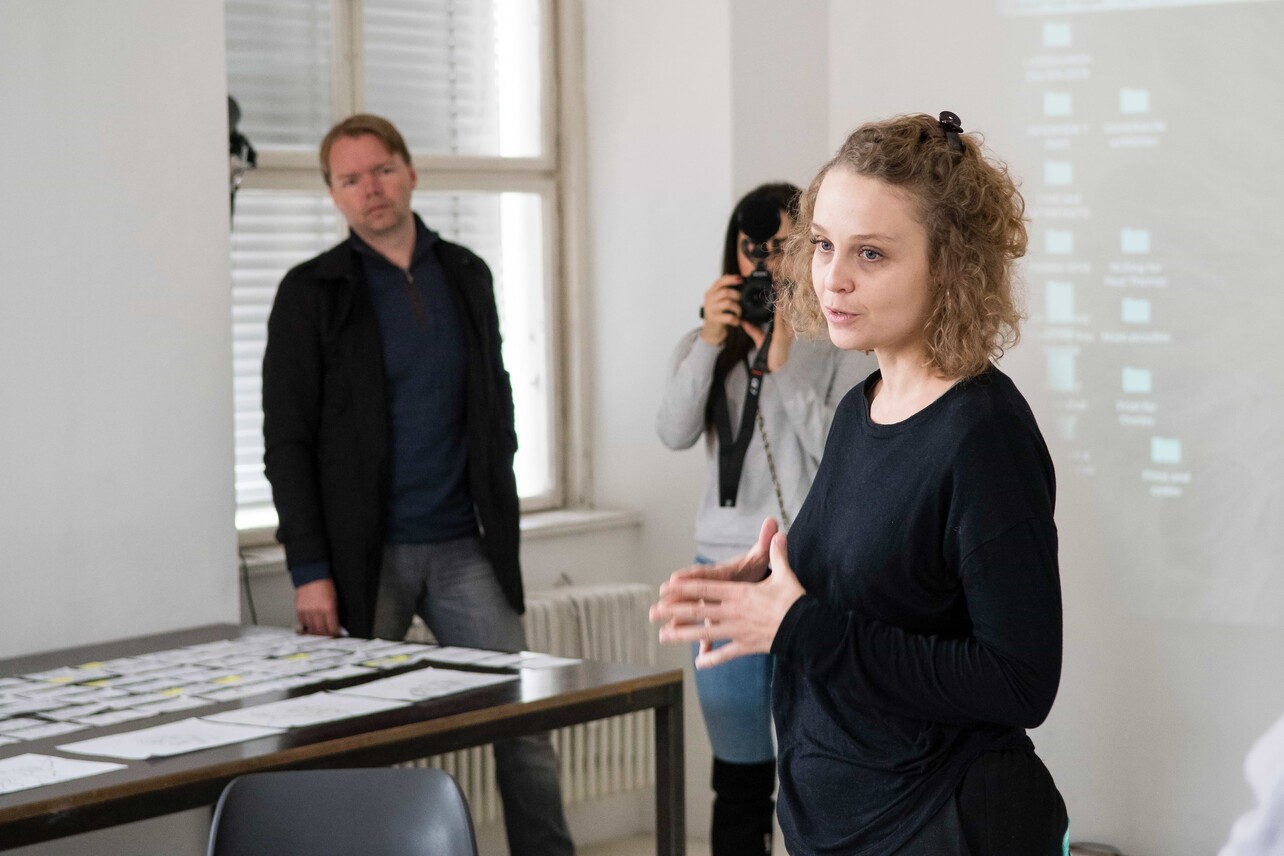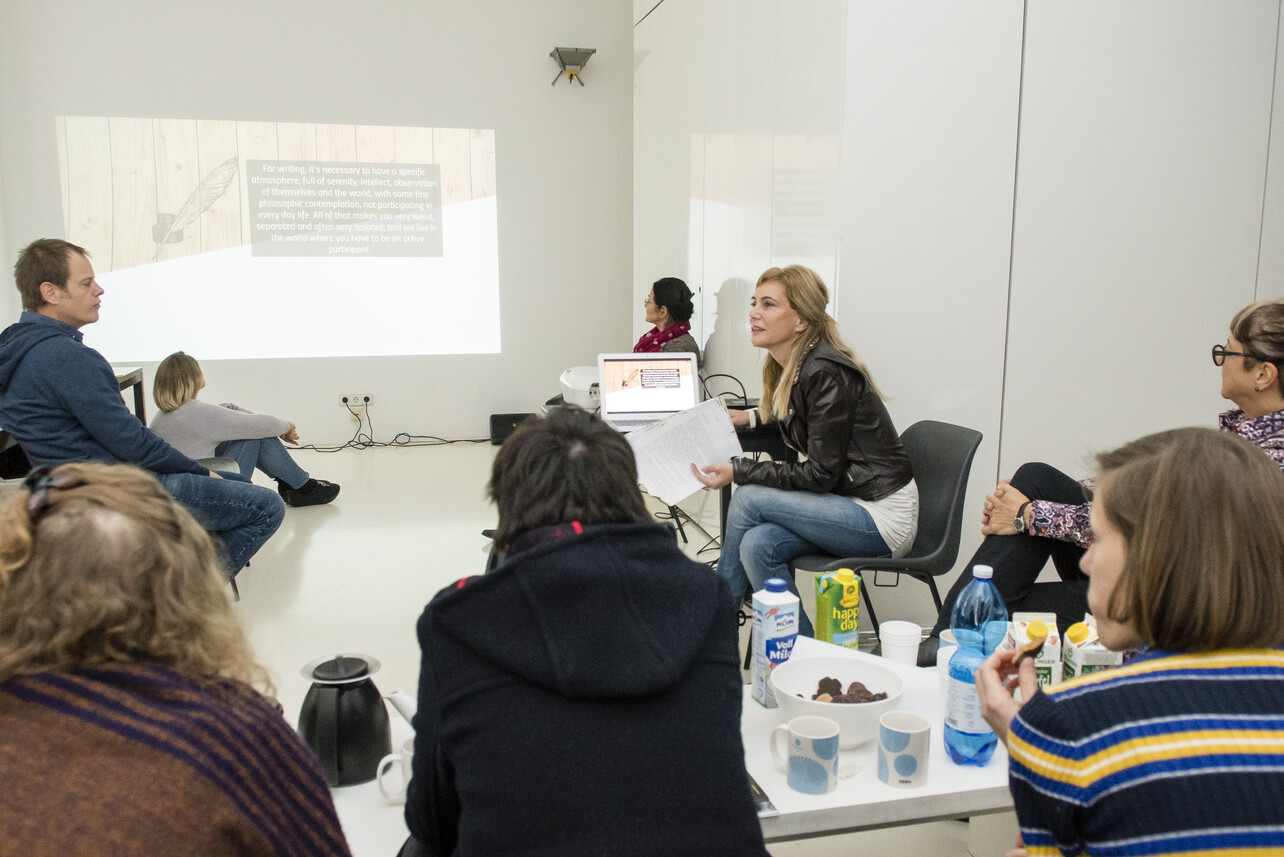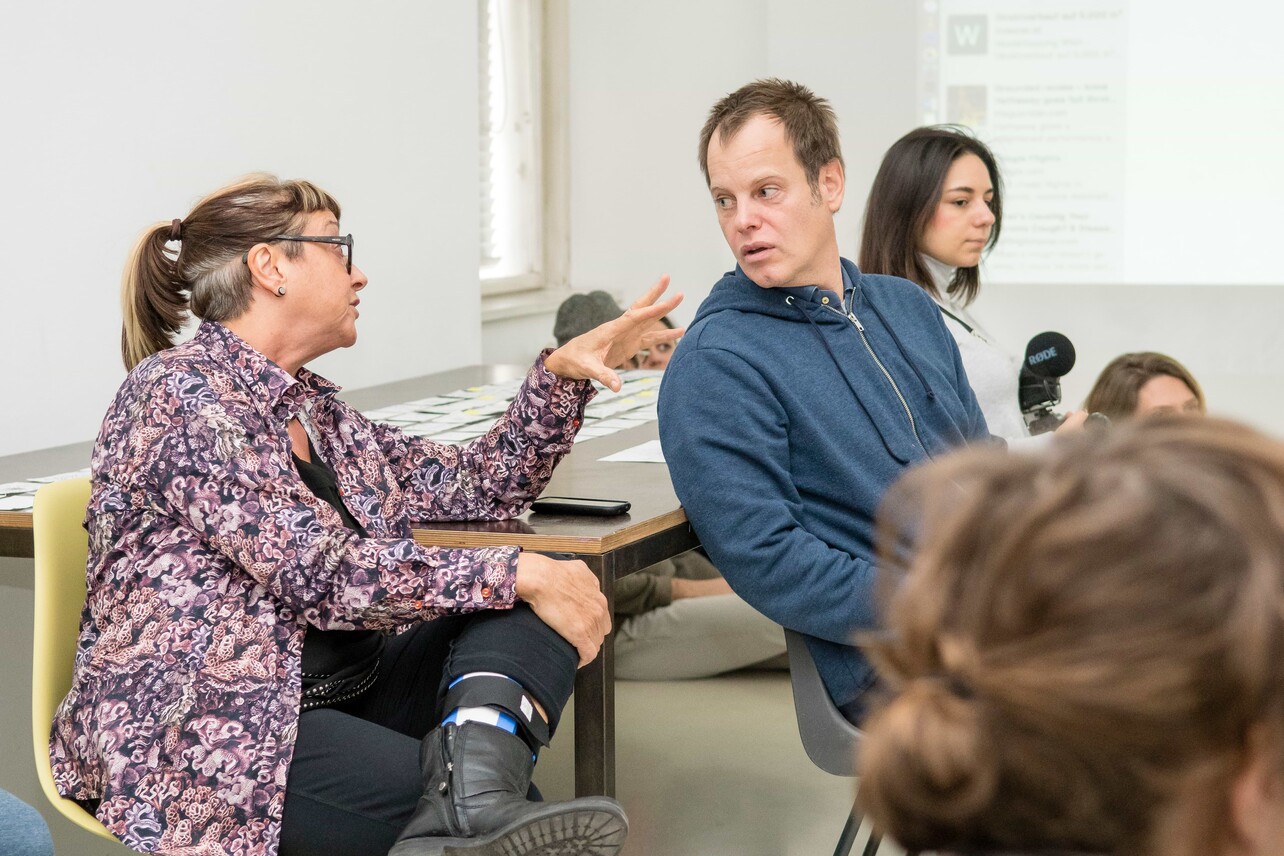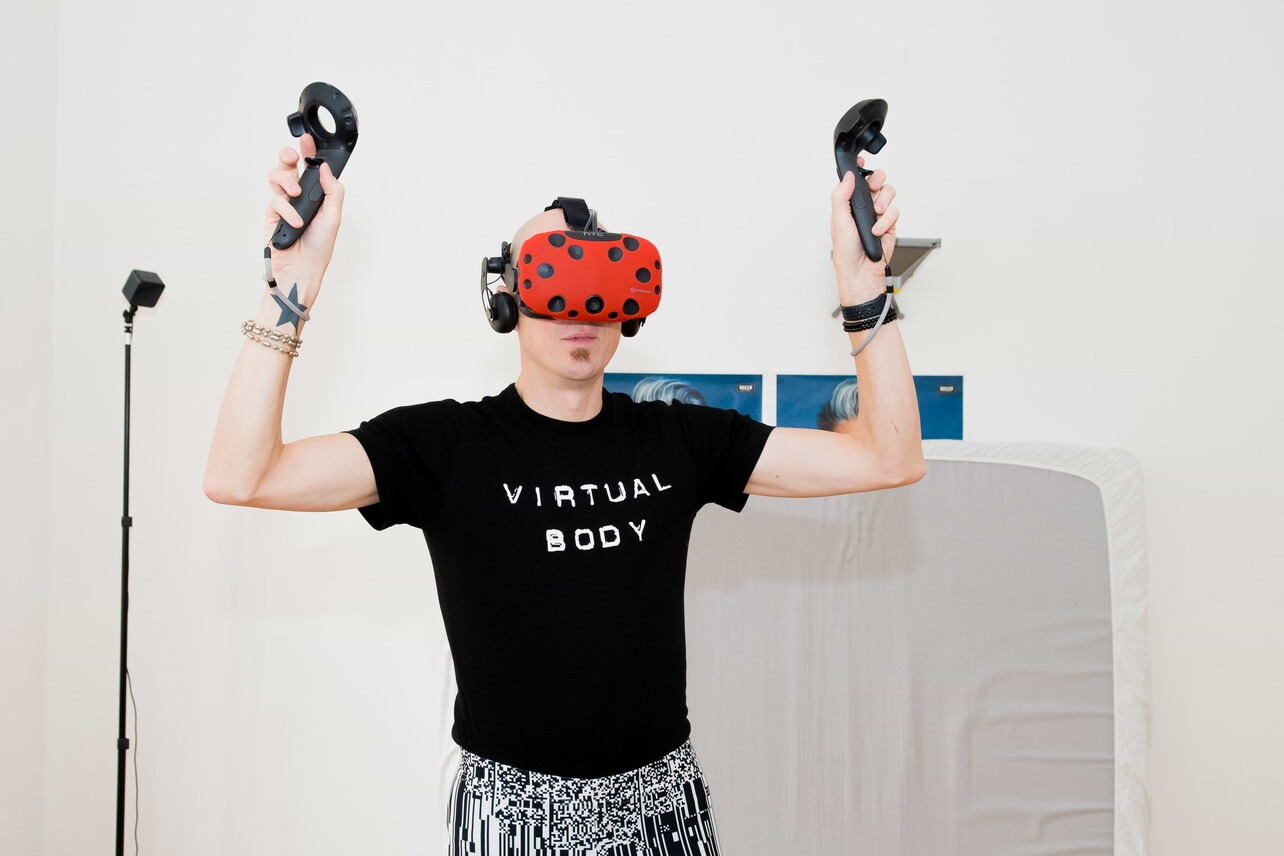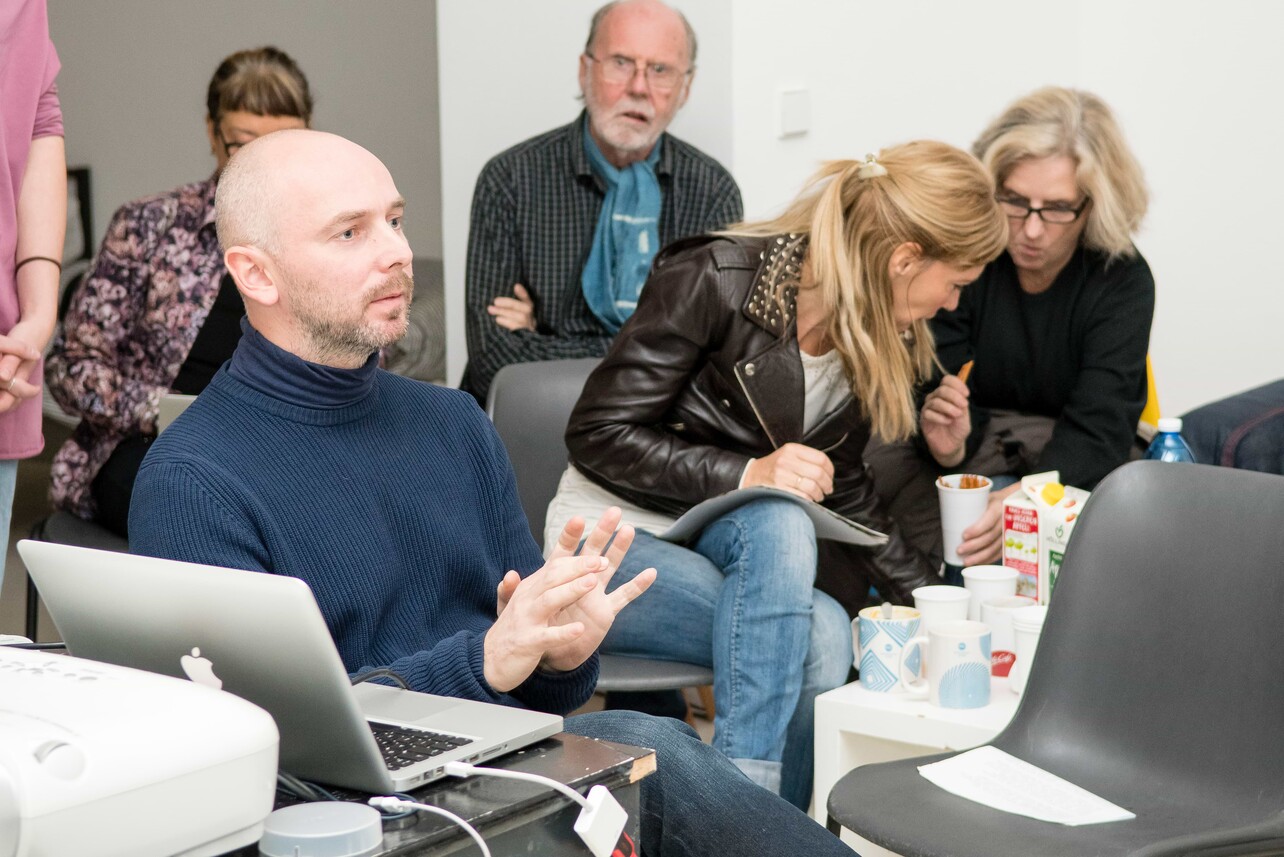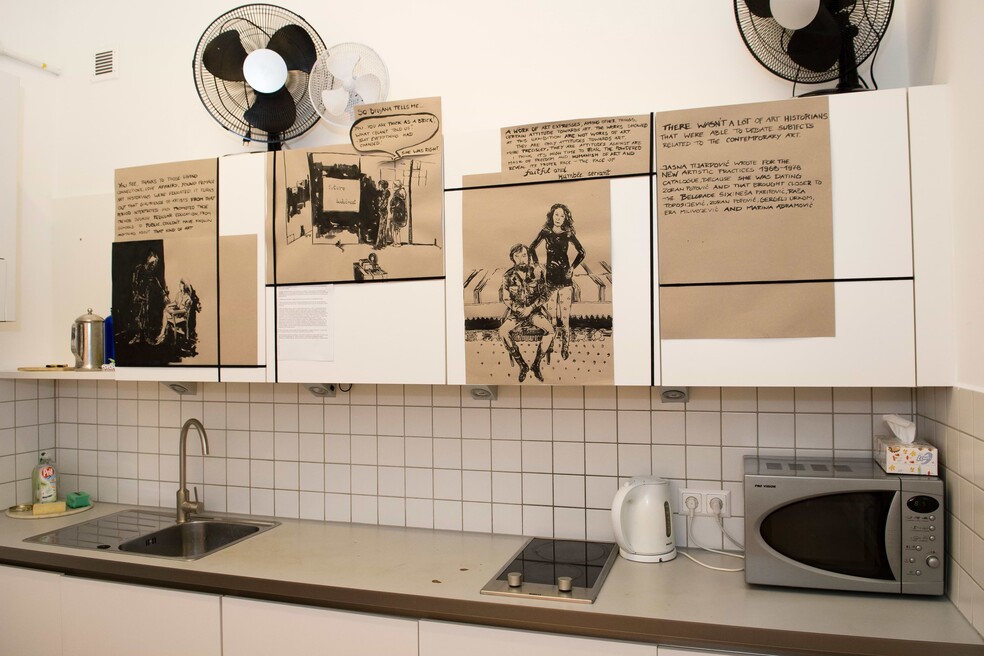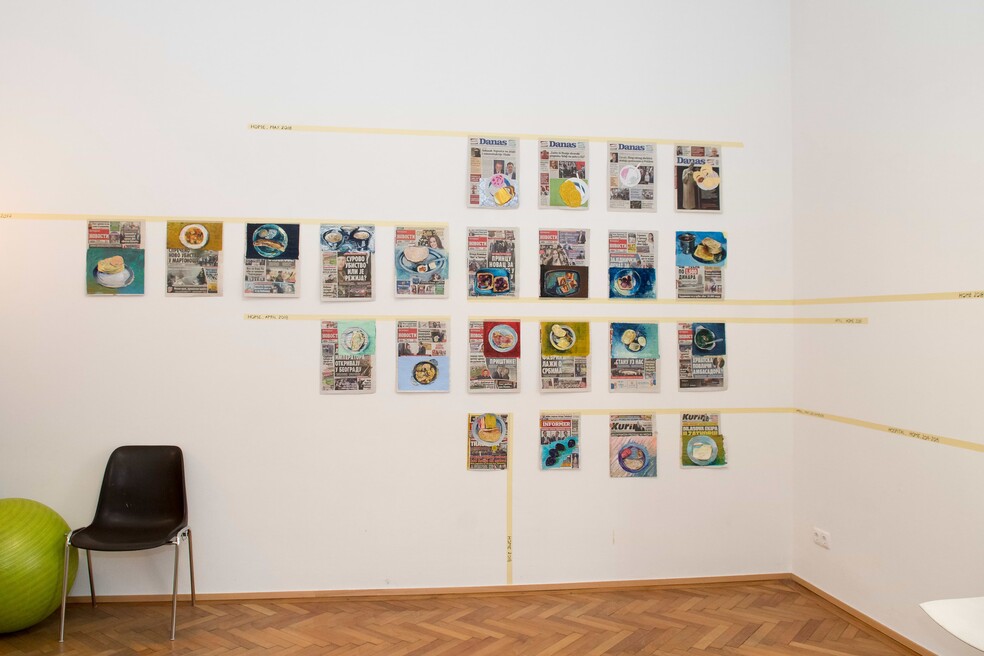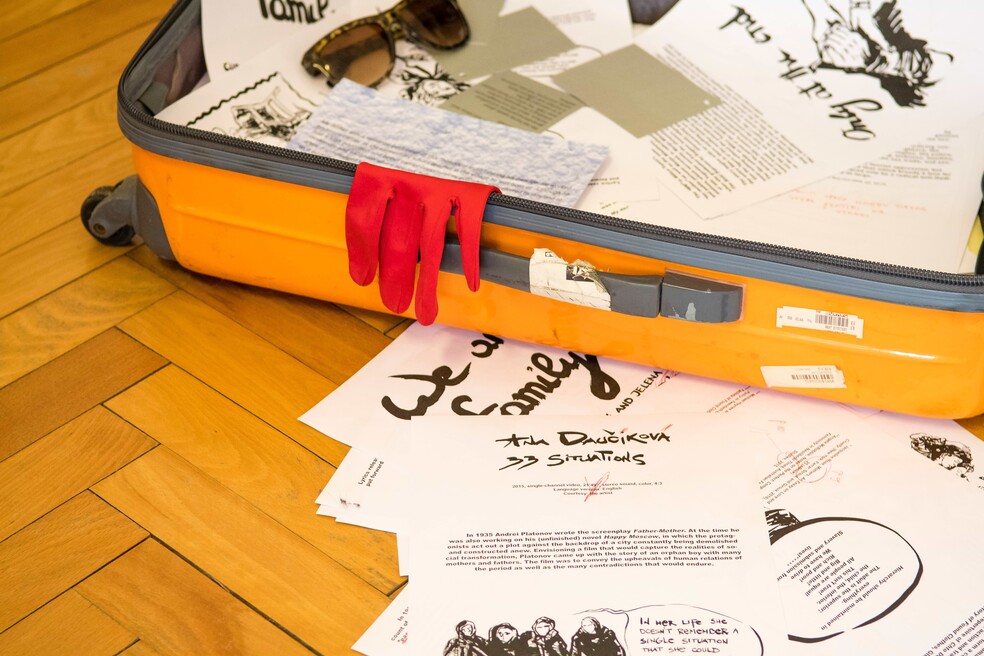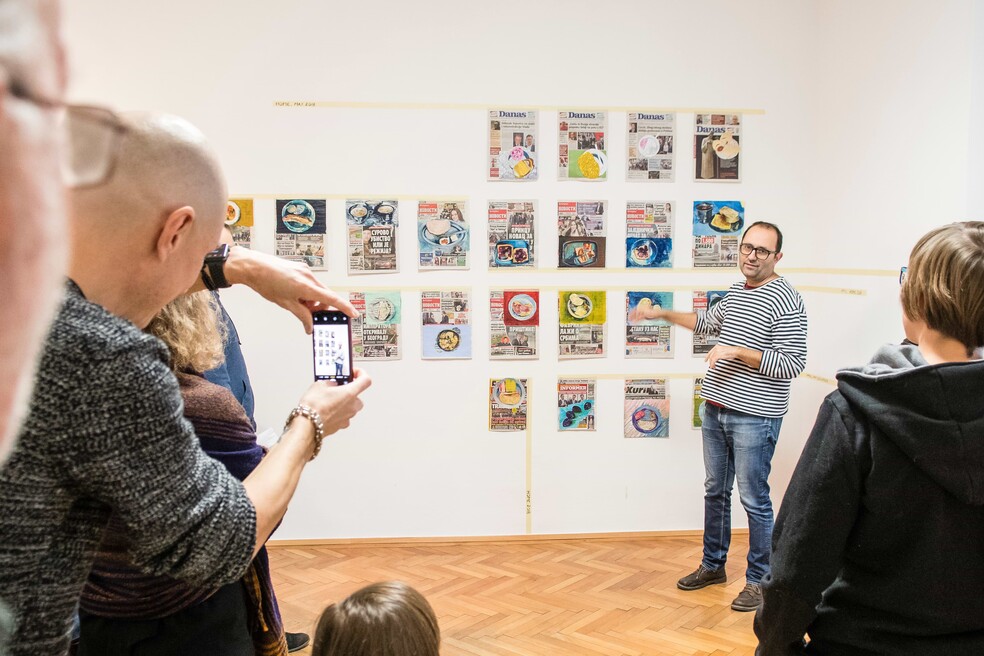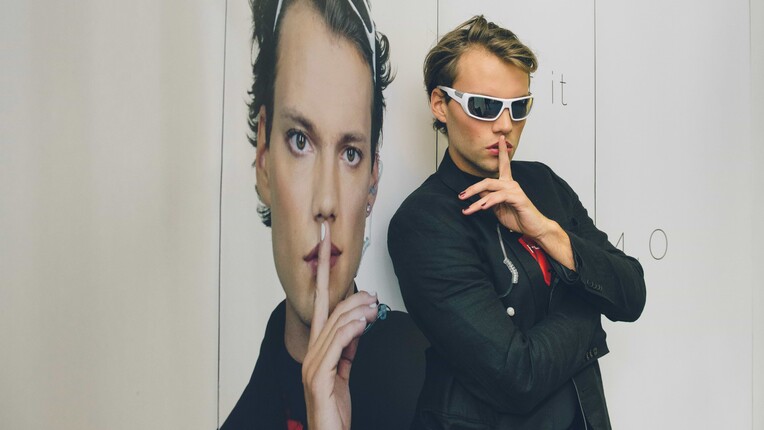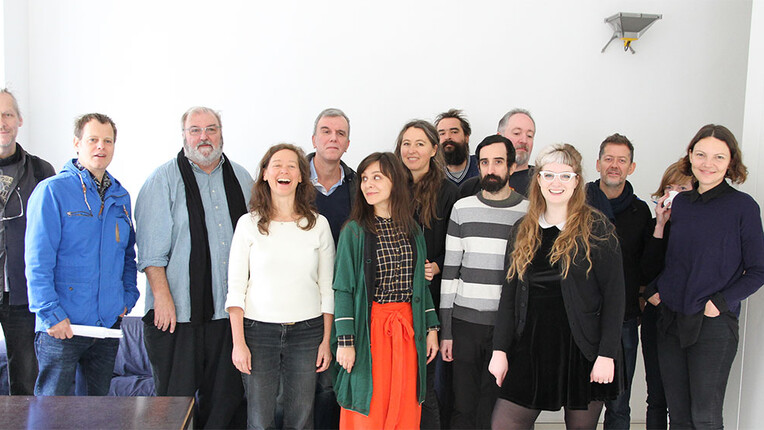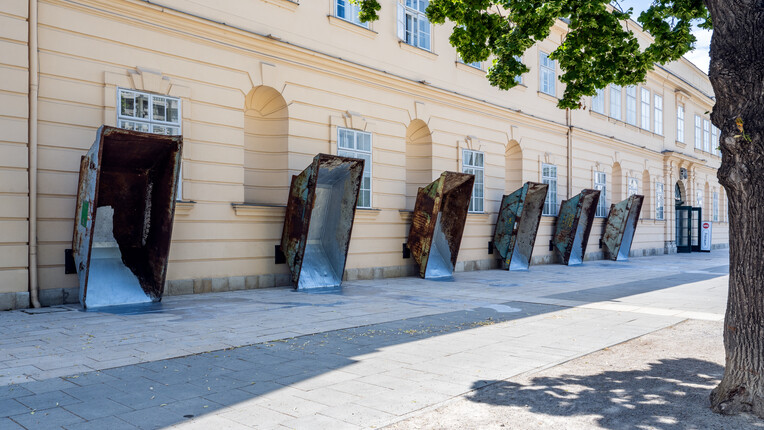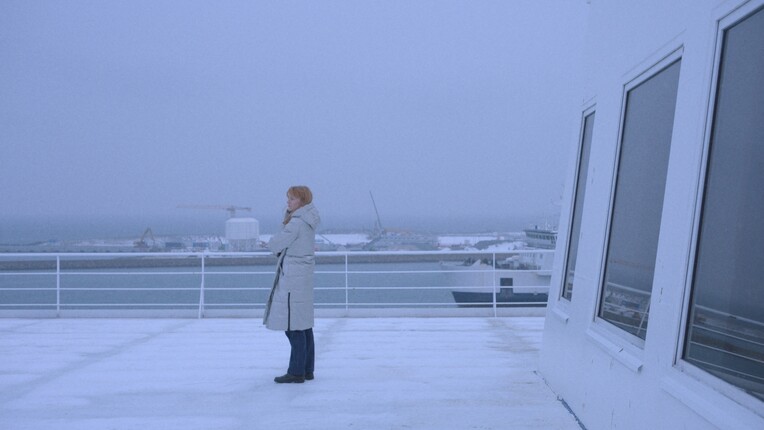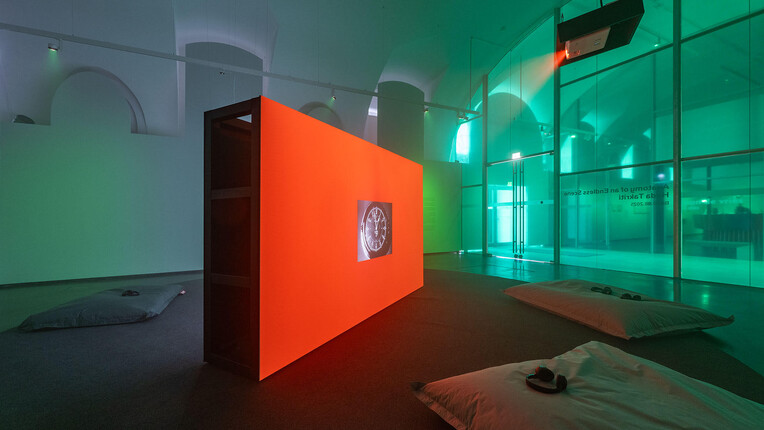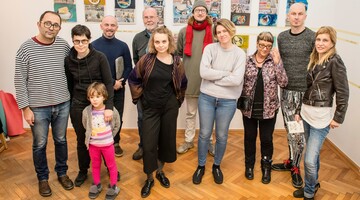
VIENNA ART WEEK 2018: Studio Visit
As part of VIENNA ART WEEK 2018, the artist and cultural theorist Gerald Straub gave a guided visit of the Q21 Artist-in-Residence Studios in MuseumsQuartier Wien.
On Saturday, 24 November during the 2018 Vienna Art Week, the artist and cultural theorist Gerald Straub gave a guided tour of the Q21 Artist-in-Residence Studios. This year a wide range of different artistic fields represented the core of what the Artist-in-Residence programme is about. A story board for an animated film (Marta Pajek), art in combination with neuroscience (Jill Scott) or a VR installation (Aaron Muszalski) gave the visitors an impression of how versatile art can be.
Alina Popa and Florin Flueras briefly introduced The Clinic, the most recent entity they have initiated. For The Clinic six artists met in a Transylvanian village to develop therapies that can also function as artworks. A decisive factor in its initiation was Alina Popa’s chronic disease, for which there is not much medical hope. After Unsorcery and Black Hyperbox, The Clinic continued the “artworlds” idea of subtly choreographed processes that establish not only products but production, research, curating, art making and forms of living as artworks – artworks as artworlds. In The Clinic, contexts that do not belong together are superimposed – the art space becomes a clinic where aesthetic healing and performative therapies can happen. The next entity they started working on during the MQ AiR-Residency is Life Programming. Every life is artificially constructed by cultural habits (how one eats, walks, sleeps, perceives, thinks, feels or reacts to specific contexts) and by social, political environments. And every life can be deprogrammed, reprogrammed, further artificialized and taken back by being taken further.
Keith Rowe was invited by TONSPUR Kunstverein Wien to create Tonspur 79 and talked about this specific piece he developed for the TONSPUR_passage. In this project Keith imagined that the passage way walls have absorbed the sounds that have occurred in front of them over the centuries. In order to retrieve these sounds, Keith adopted a persona along the lines of an Italian artist and musician born in the Marche region around 1314. "I am a follower of the belief that walls absorb sound and I'm part of a group experimenting with the possibility to retrieving them. I'm also working on how, once these sounds have been liberated from the wall, they might be reflected back within the space. The movement I'm part of is also attempting to develop the new ideas that will lead to the development of perspective, and how to represent three dimensional forms in space. Our movement is the precursor to the work of Filippo Brunellesch and Fra Angelico."
HARD-CORE members Eloise Bonneviot and Anne de Boer showed an audio piece representing HARD-CORE as an individual and external entity managing the magnet as an organism. One way of doing this is the development of collaborative speeches, presentations and lectures. Where opinions most often clash and repulse each other, discourse is being activated to achieve a multiple perspective.
Marta Pajek is an independent author of animated films, connected to the Warsaw based Animoon Studio. During the studio visit, Marta shows her story-board which she developed partly during her residency in Vienna. It is part of an animated film triptych called 'Impossible Figures and Other Stories', which consists of three animated short films. They are based on the idea of an impossible figure – one which can be drawn according to all the rules of perspective but cannot be constructed in reality. Each of the stories describes such an impossible situation – simple at first, but filled with paradoxes and traps as we get deeper into it. At the MQ she developed the final part of a triptych, the storyboard, which was shown during the presentation alongside with design sketches.
Aleksandra Mihajlovic talked about her new novel and about the turning point in its story. It deals with the international literature between the first and the second world wars, considering the works of Milka Zicina, an author who was born in Croatia in 1902 and who died in Belgrade in 1984. She started her journeys in Vienna, where she met many famous people. She sat in the cafes with them, talking and writing her works. The Viennese streets, museums, operas, restaurants and theatres- are all to be part of the atmosphere that pervades the novel. In addition, Aleksandra is the descendant of the famous Bauhaus architect, Selman Selmanagic who was her great great uncle. He was a professor at the Technical University in Graz from 1970, and before that he taught at the Berlin University of Architecture. His most famous work was the Stadium of World Youth in Berlin. His biography, like the biography of Milka Zicina, is more like an adventure or a spy novel than the life of a man who left some great 20th century works behind him. Aleksandra is studying the biography of Selman Selmanagic, because he is going "to meet" Zicina in her novel.
Dr. Jill Scott is a lecturer, professor and context provider with many years experience in the unique field of art and science research. Her own oeuvre spans 38 years of production about the human body, behaviour and body politics, but in the last ten years she has focused on creative media art experiments about neuroscience, ecology and sensory perception, resulting in a series called Neuromedia. This current research is based on making interpretative interactive constructions of sculptural models with interactive film segments based on actual scientific research and embedded with cultural metaphors.
Aaron Muszalski has been creating radically interactive experience art across a diverse range of media for over twenty years. Often ephemeral, these works rarely produce artefacts, but instead seek to facilitate transformative or cathartic journeys in liminal space — that weird territory between what is and what yet may be. His latest project is “YOU’RE FUCKED”, an embodied virtual reality experience recreating the January 2016 killing of the unarmed citizen Daniel Shaver by a police officer in Mesa Arizona.
Răzvan Anton is working on a project called Absence as Heritage taking place at the Medias Synagogue in Romania. Over the past five years, the Casa de lângă Sinagogă (House by the Synagogue) has transformed from a place of abandonment to one of animation. Once the home of a forgotten and long absent community, the space now hosts vibrant groups of children, students, tourists and local residents. The Casa team has realised projects to preserve its archives, library, and tapestries and is currently in the middle of the EU-funded Traces project (Transmitting Contentious Cultural Heritages with the Arts).
Jelena Vesić & Darinka Pop Mitic presented an exhibition in three rooms in their studio: Faithful and Humble Servant, Stupid as Painter and We Are Family. The project The Face of Faithful and Humble Servant isconceived as an artistic-theoretical, analytical-fictional and feminist critique of the dominant practices of historicisation of Yugoslav conceptual art based on the well-known narrative of the great-artist-and-his-work. The outcome of their research will be a text and image-based artwork, including a series of drawings made from documentary photographs, representing selected “cases” and a docufictional conversation scenario, with interpretative-interventionist comments.
